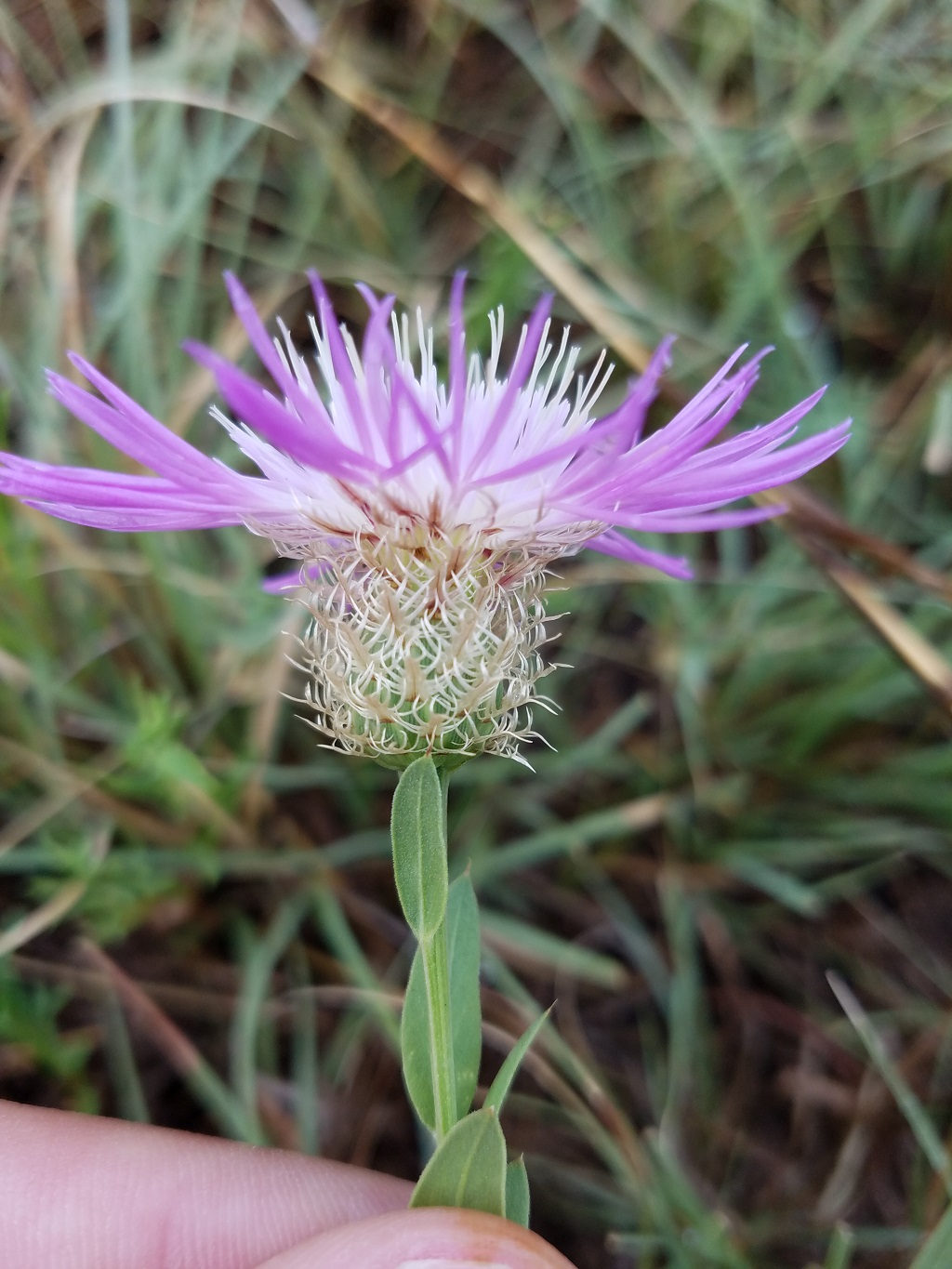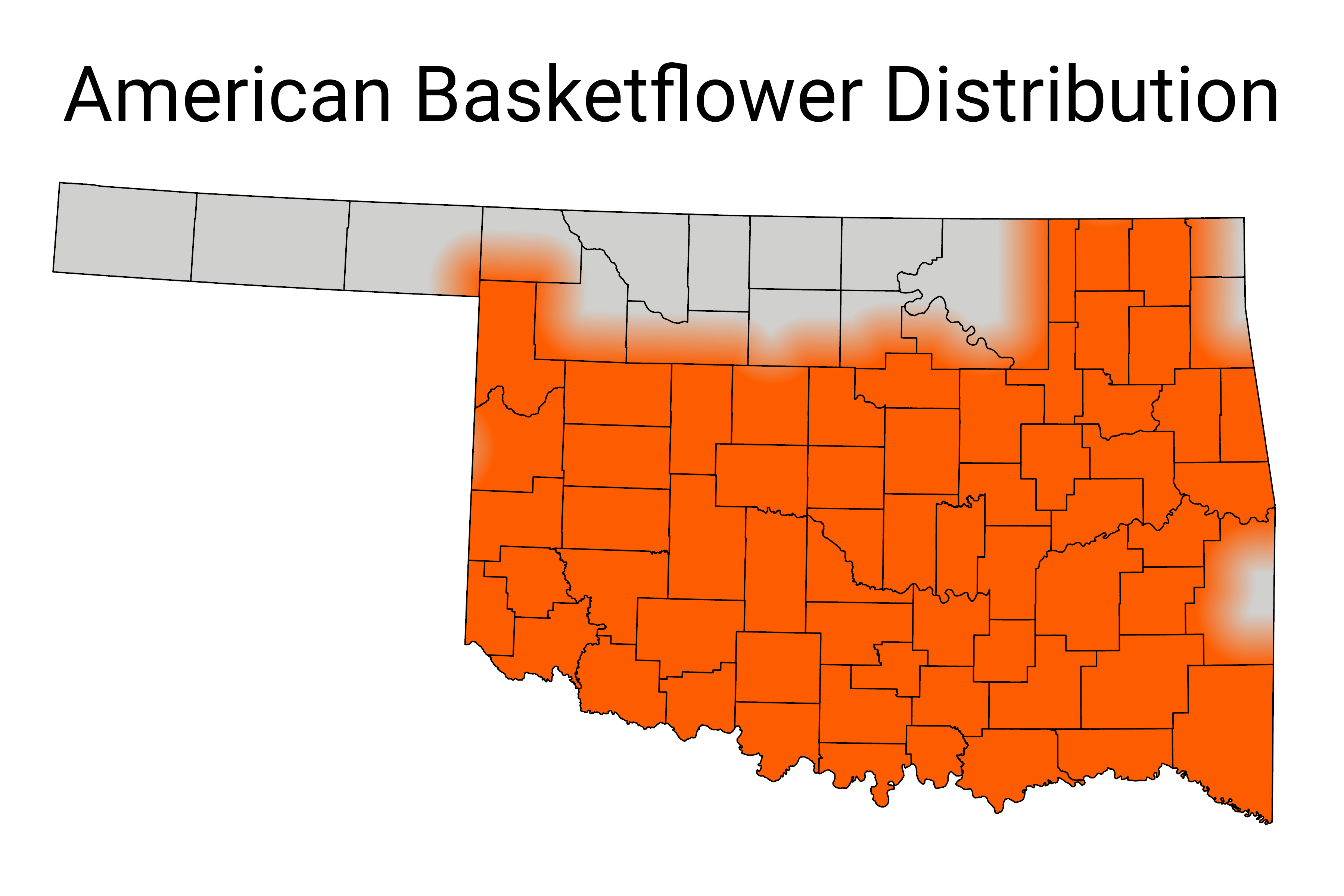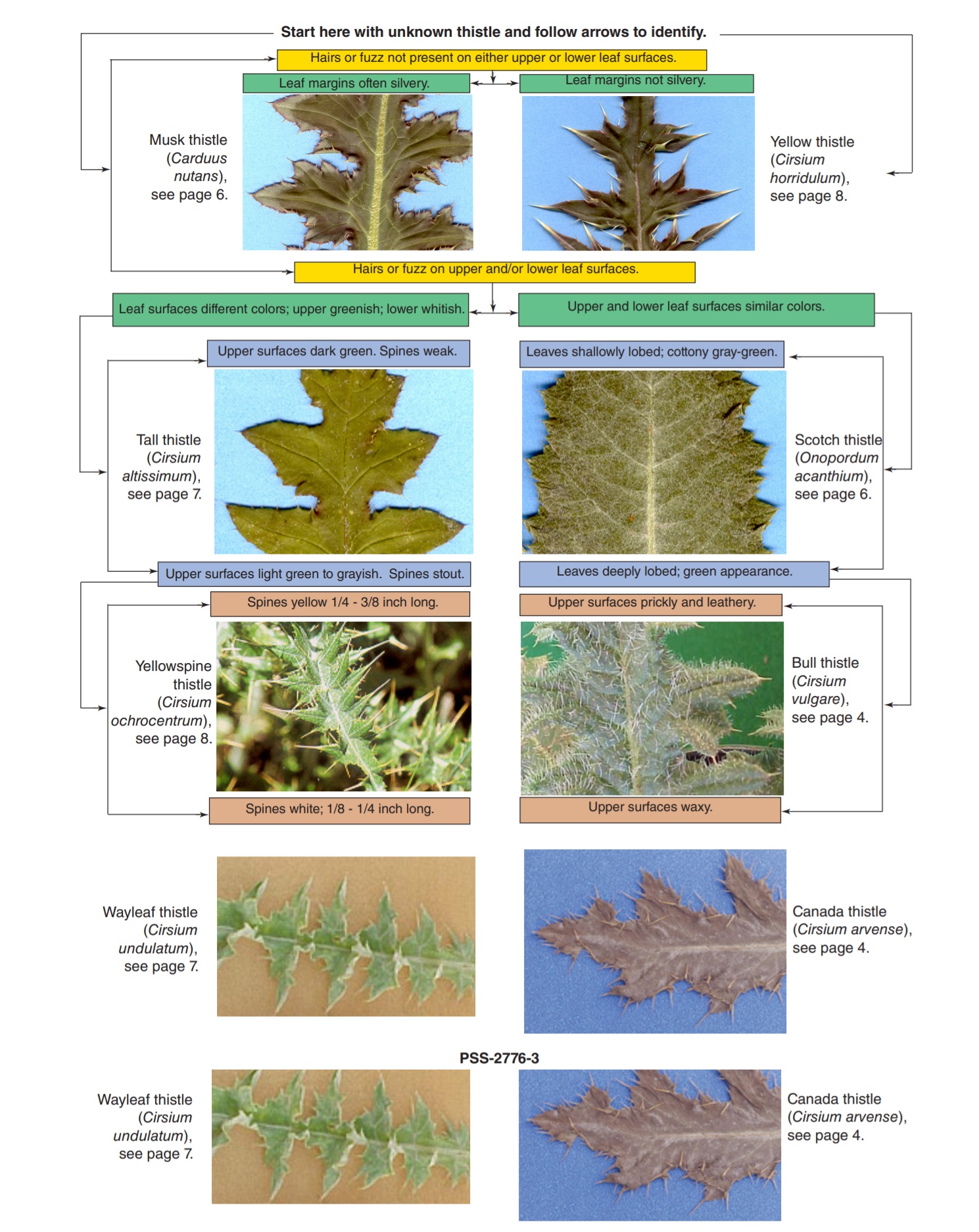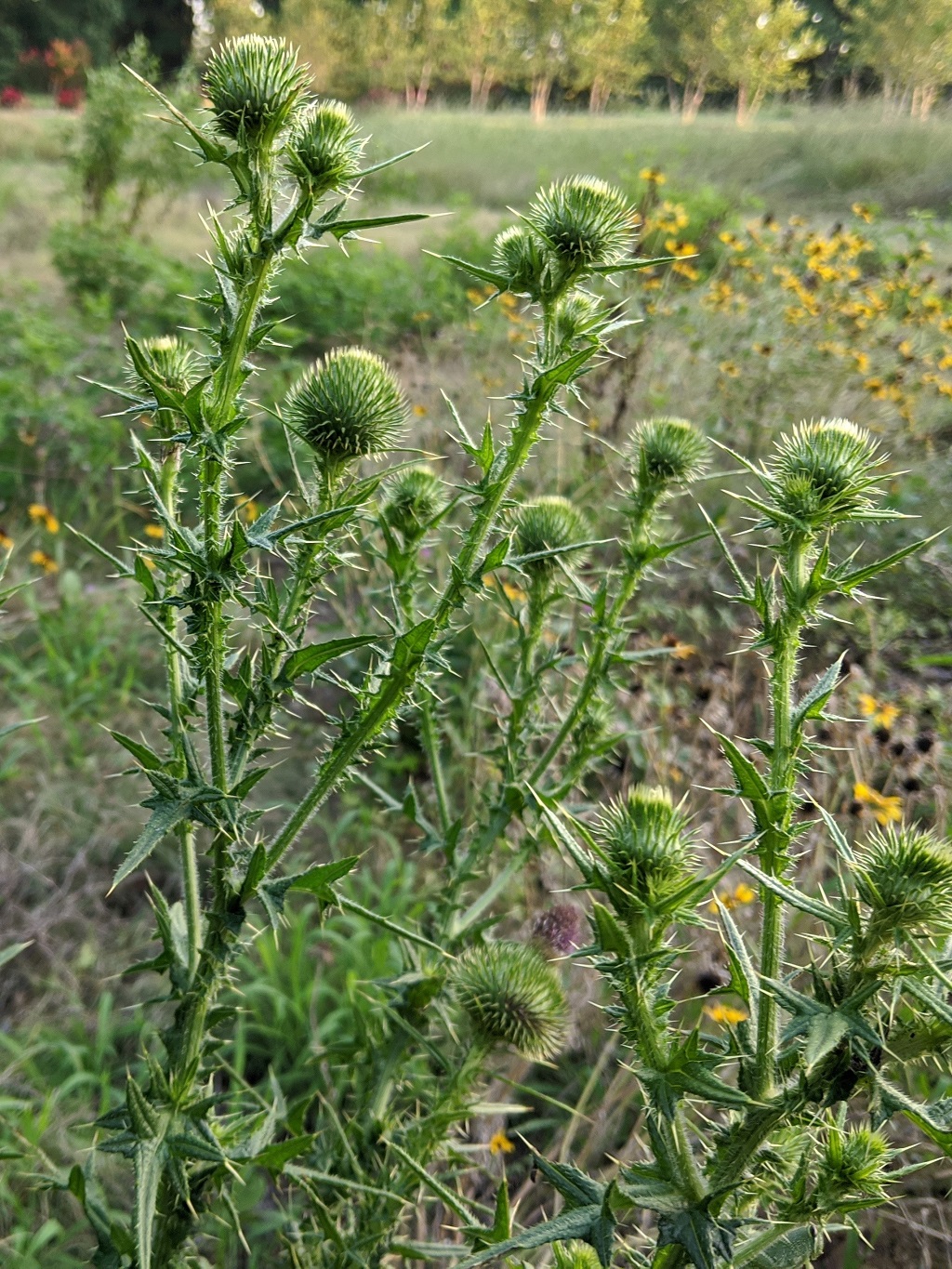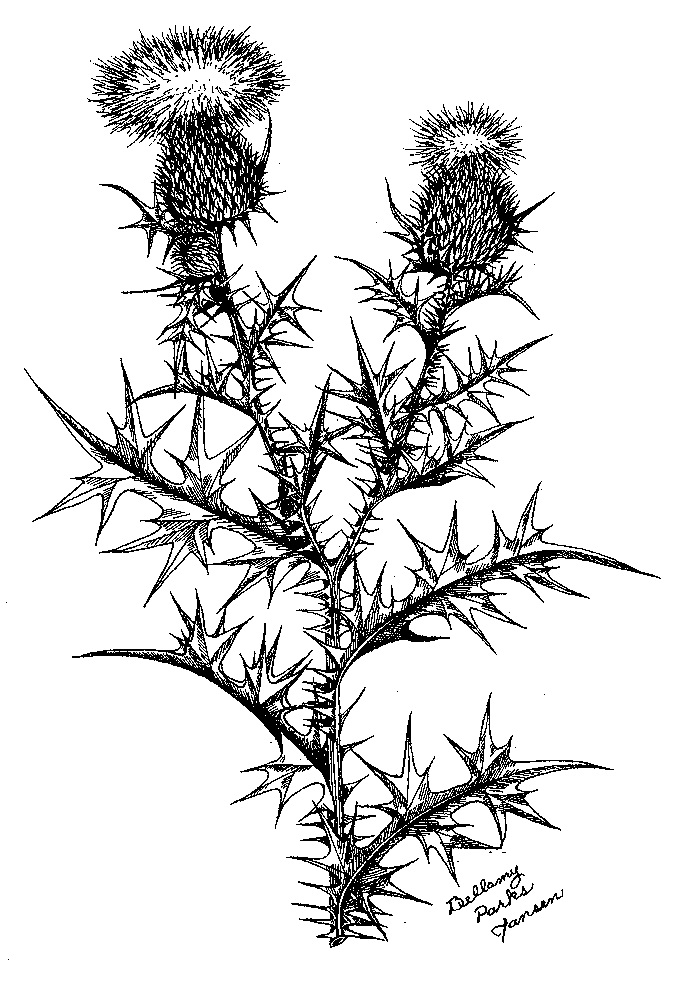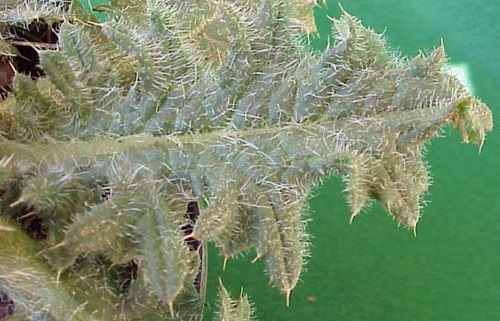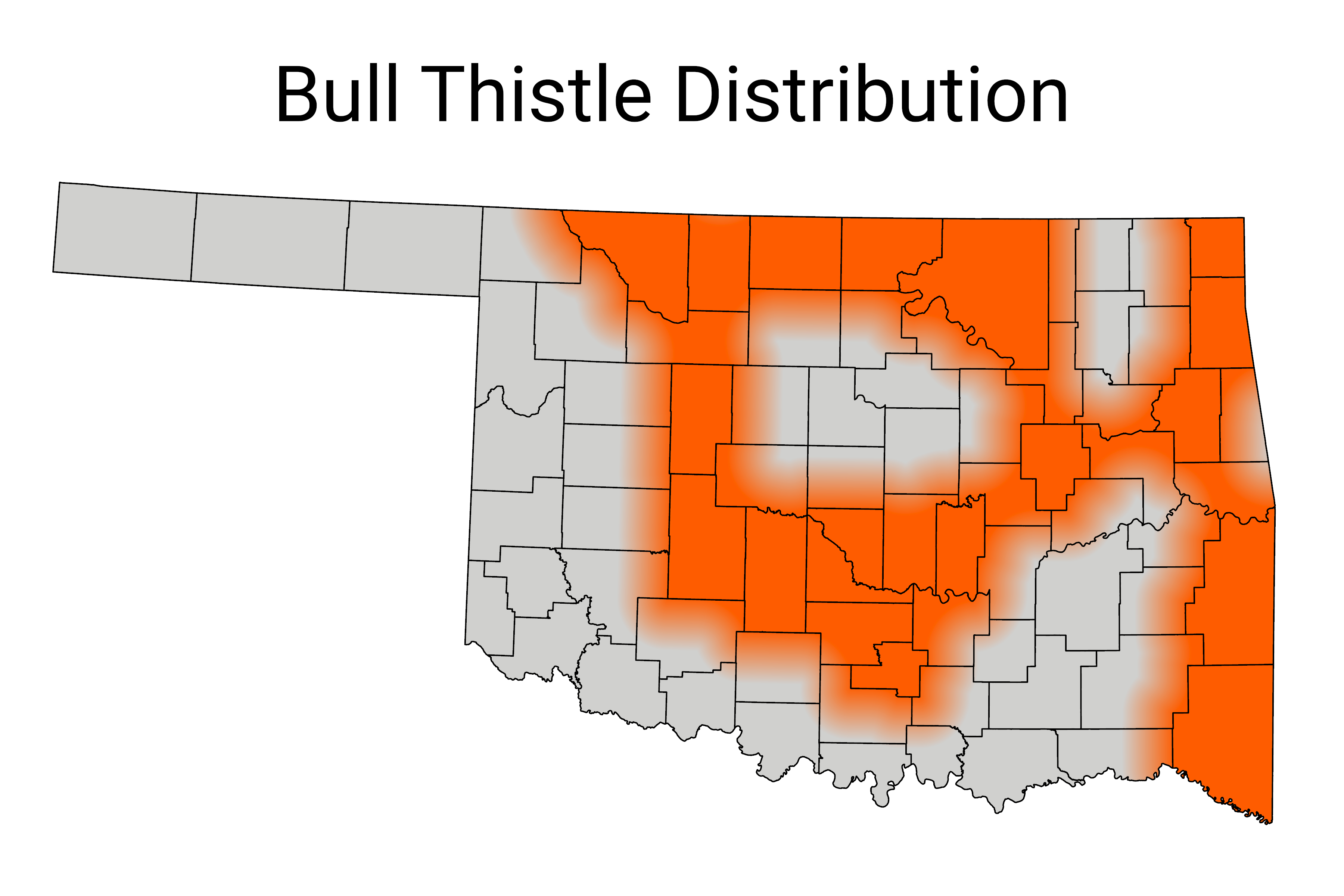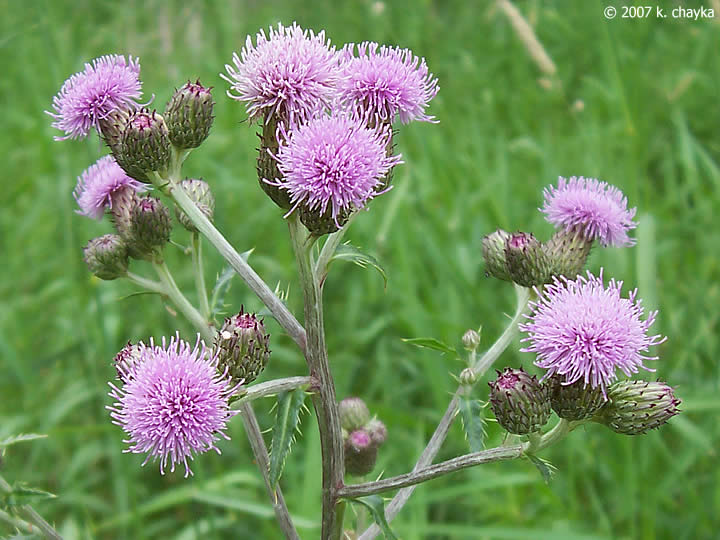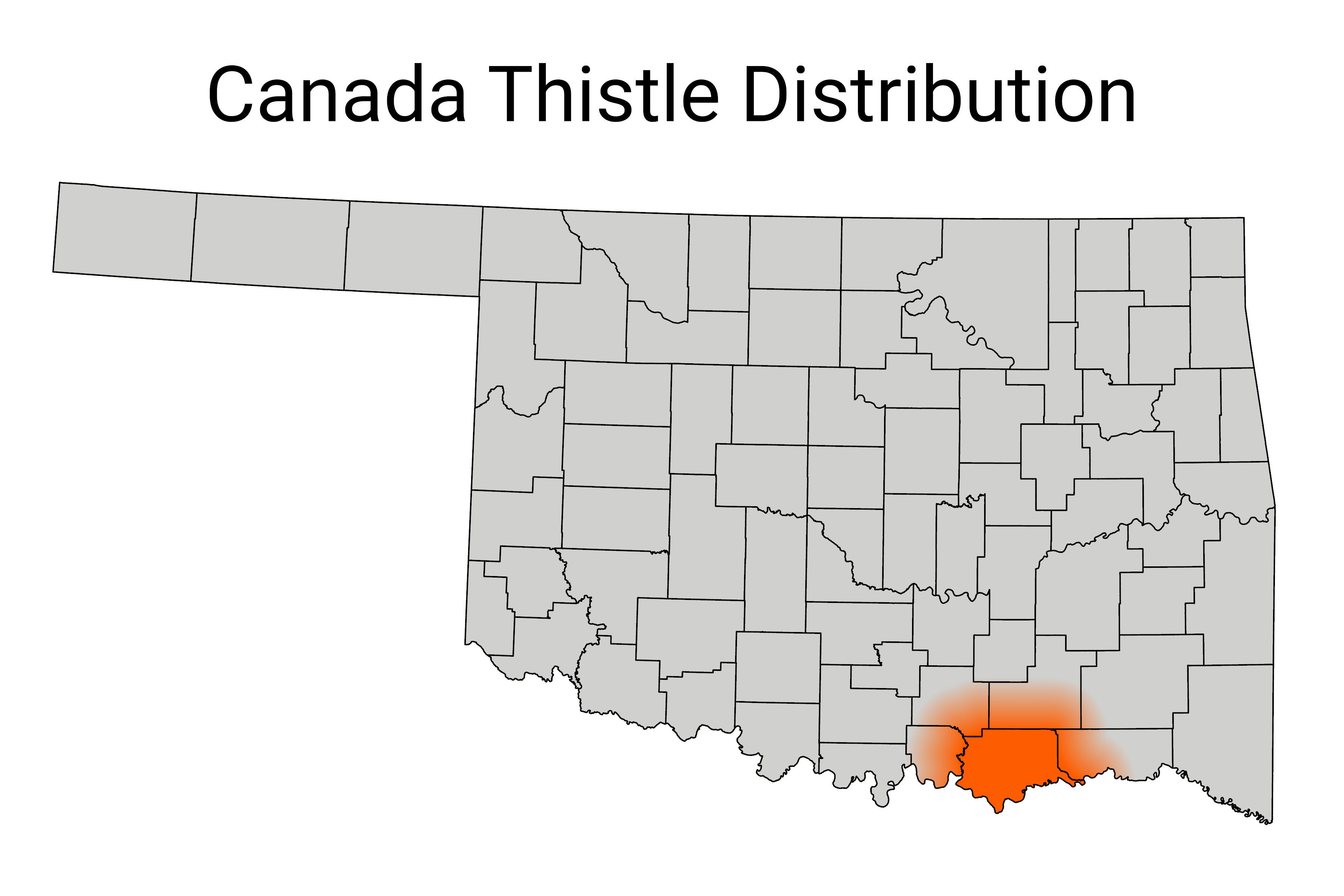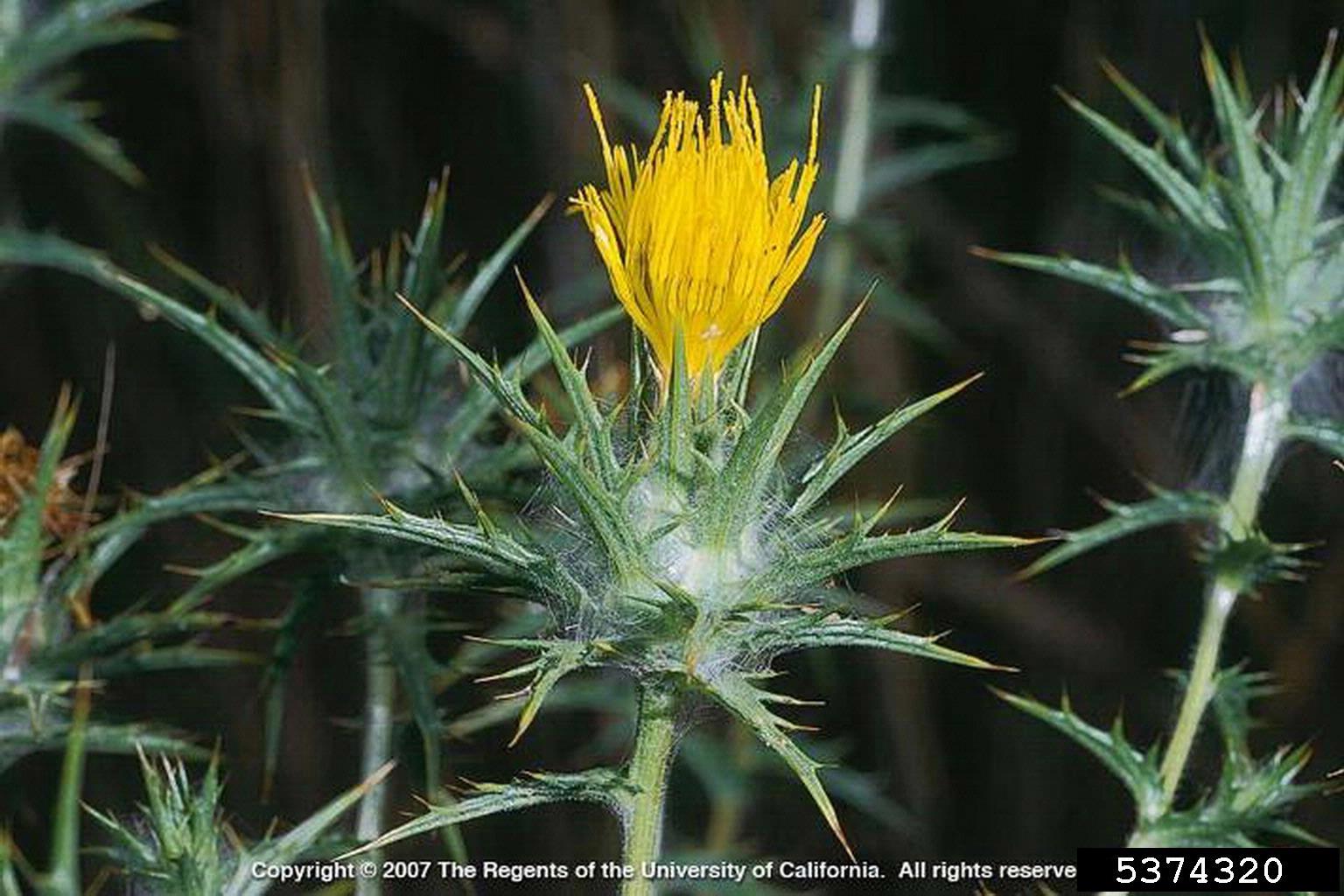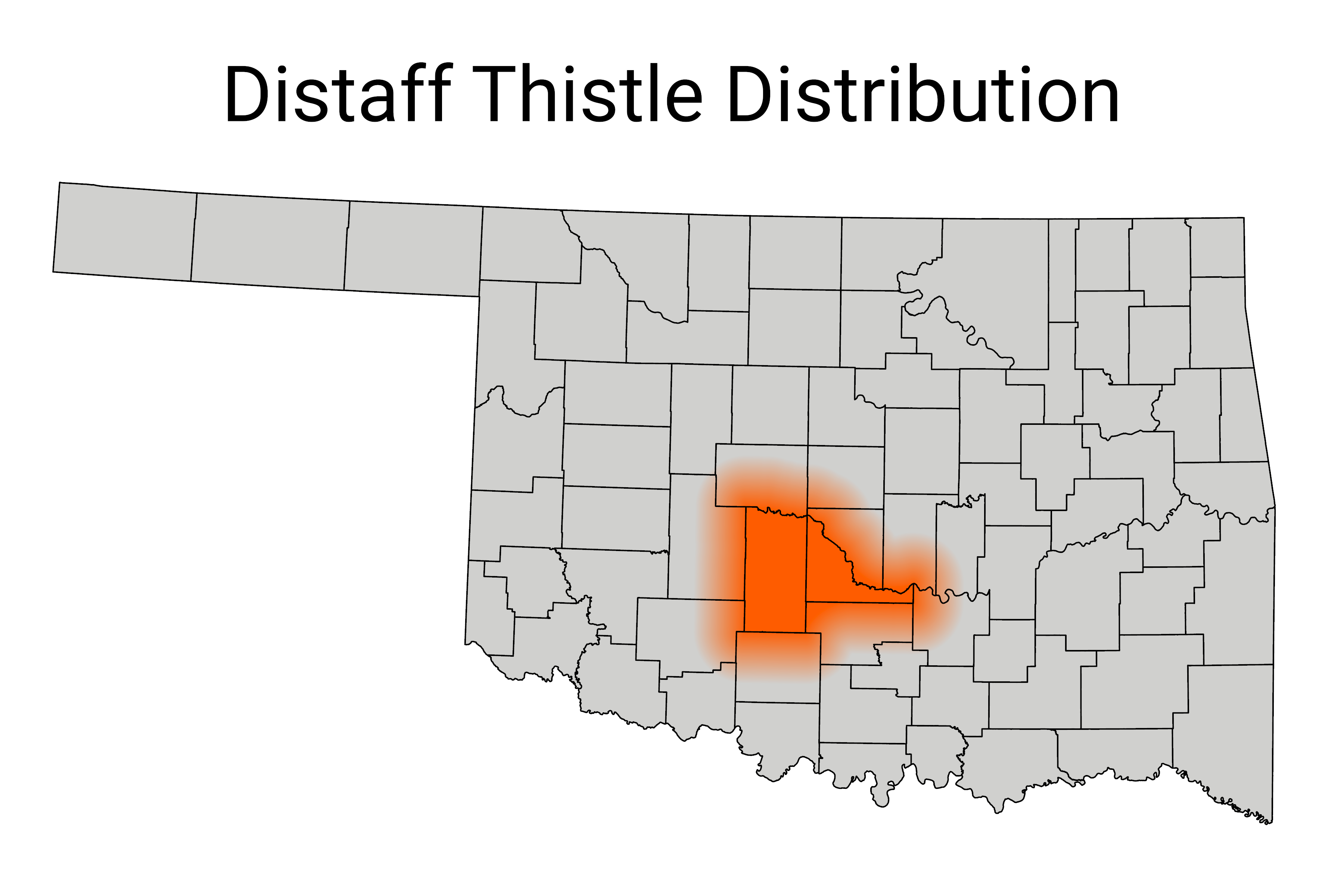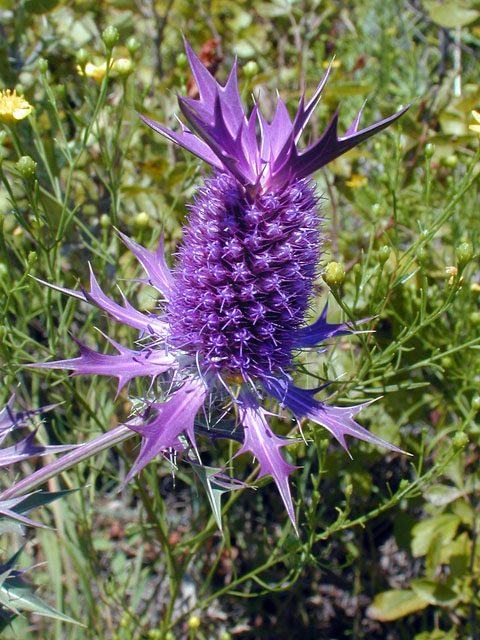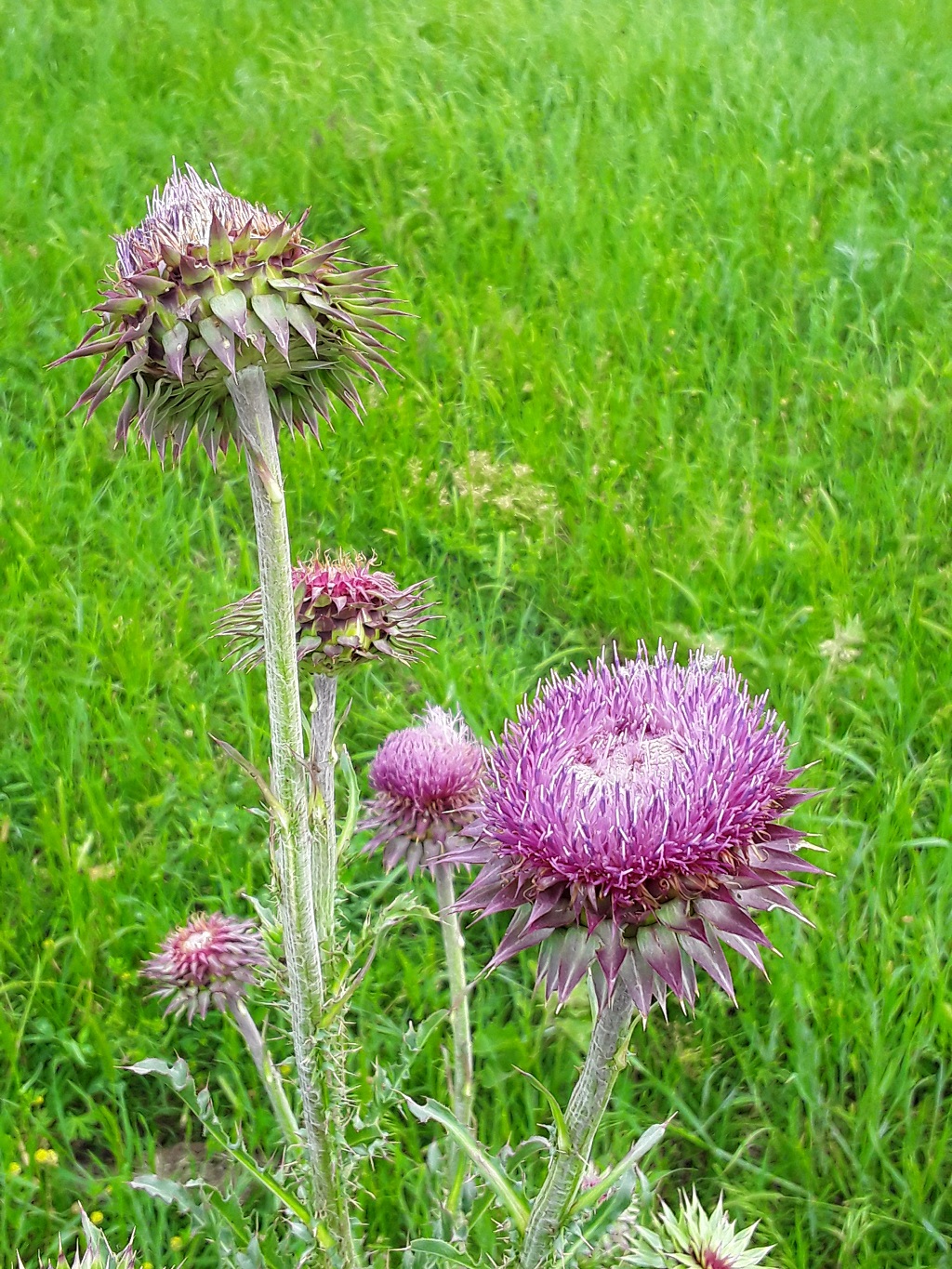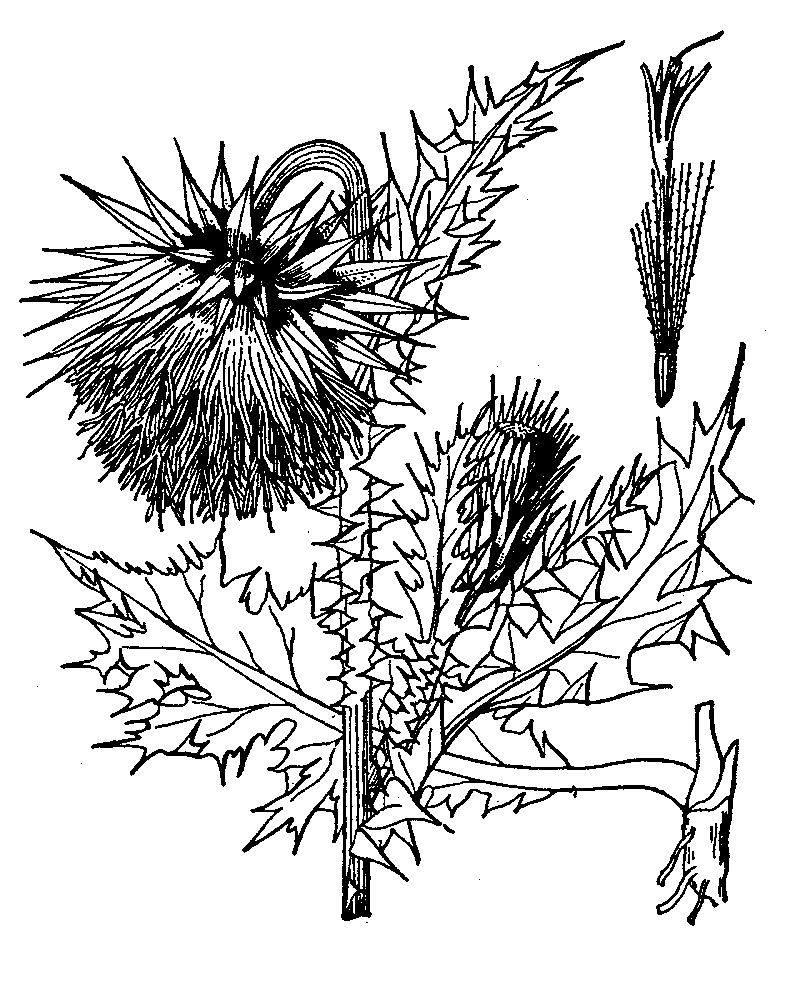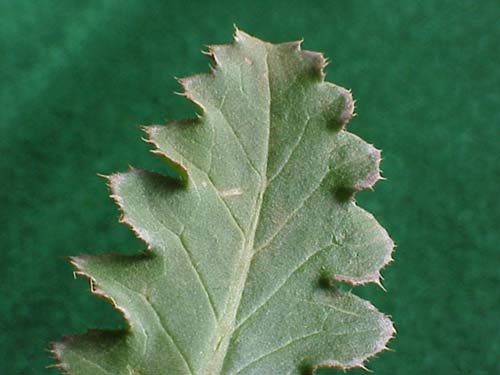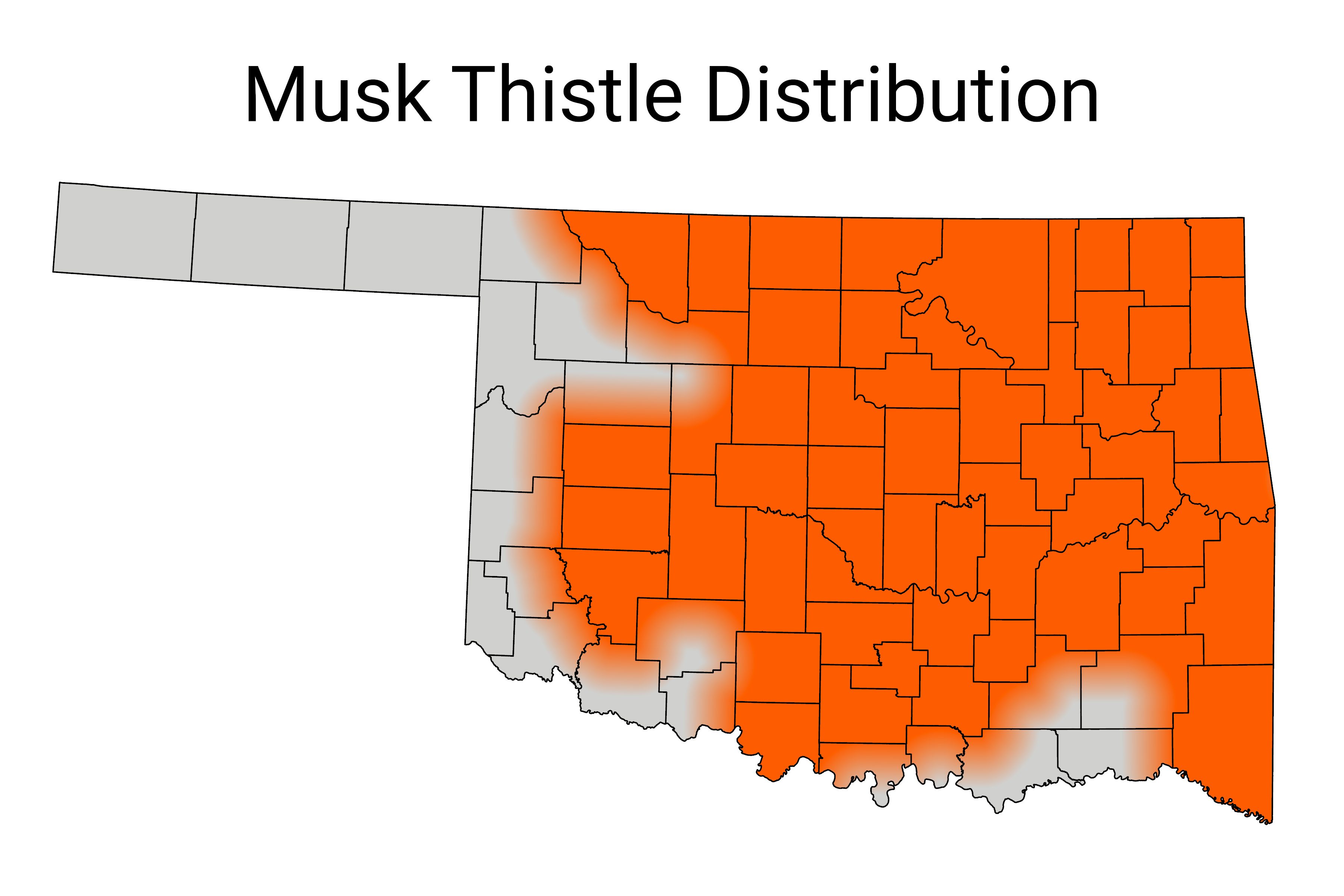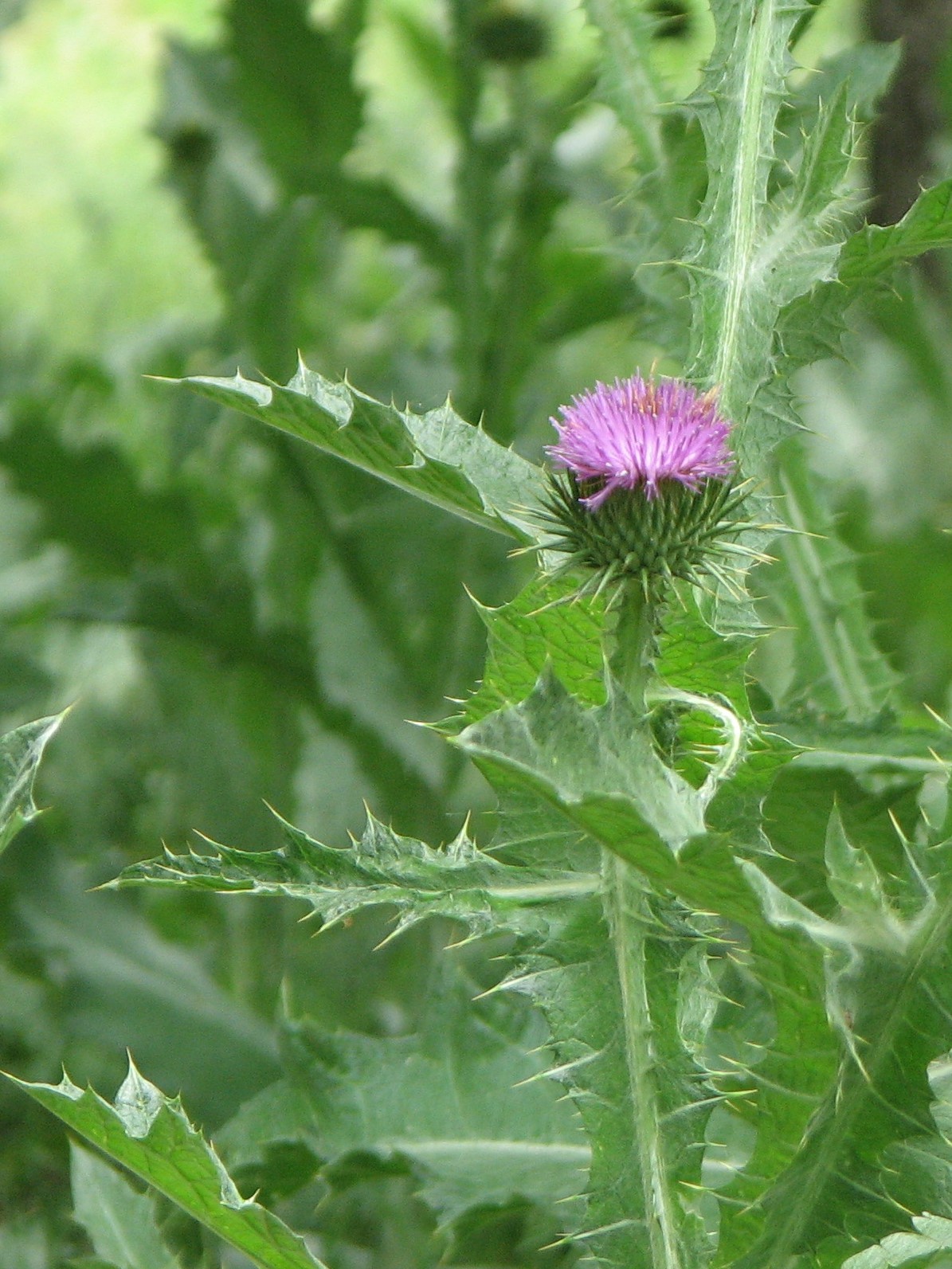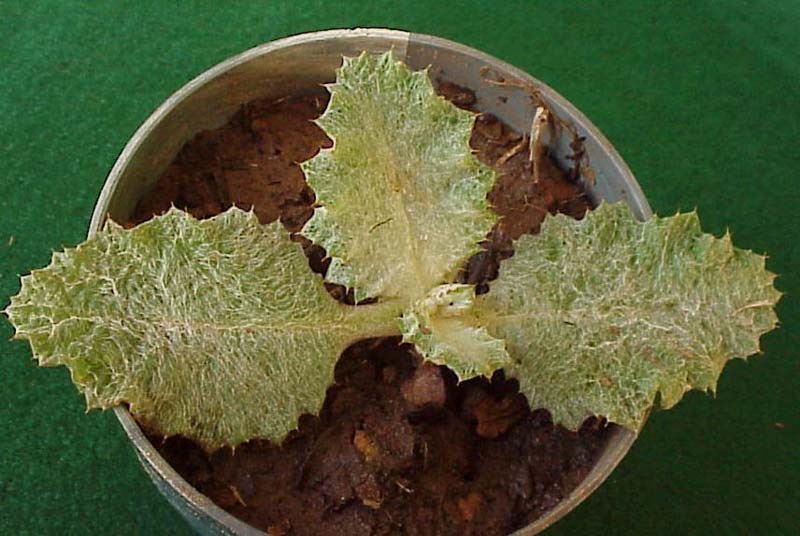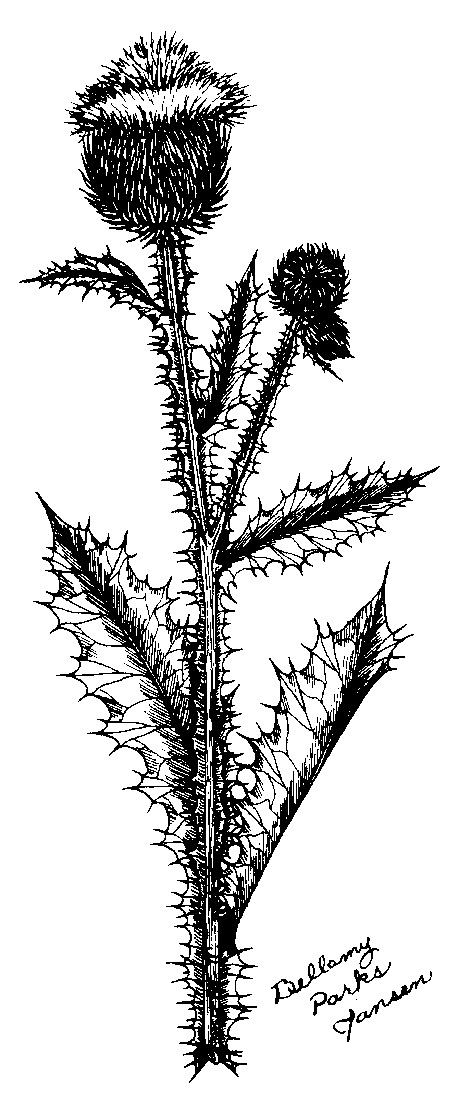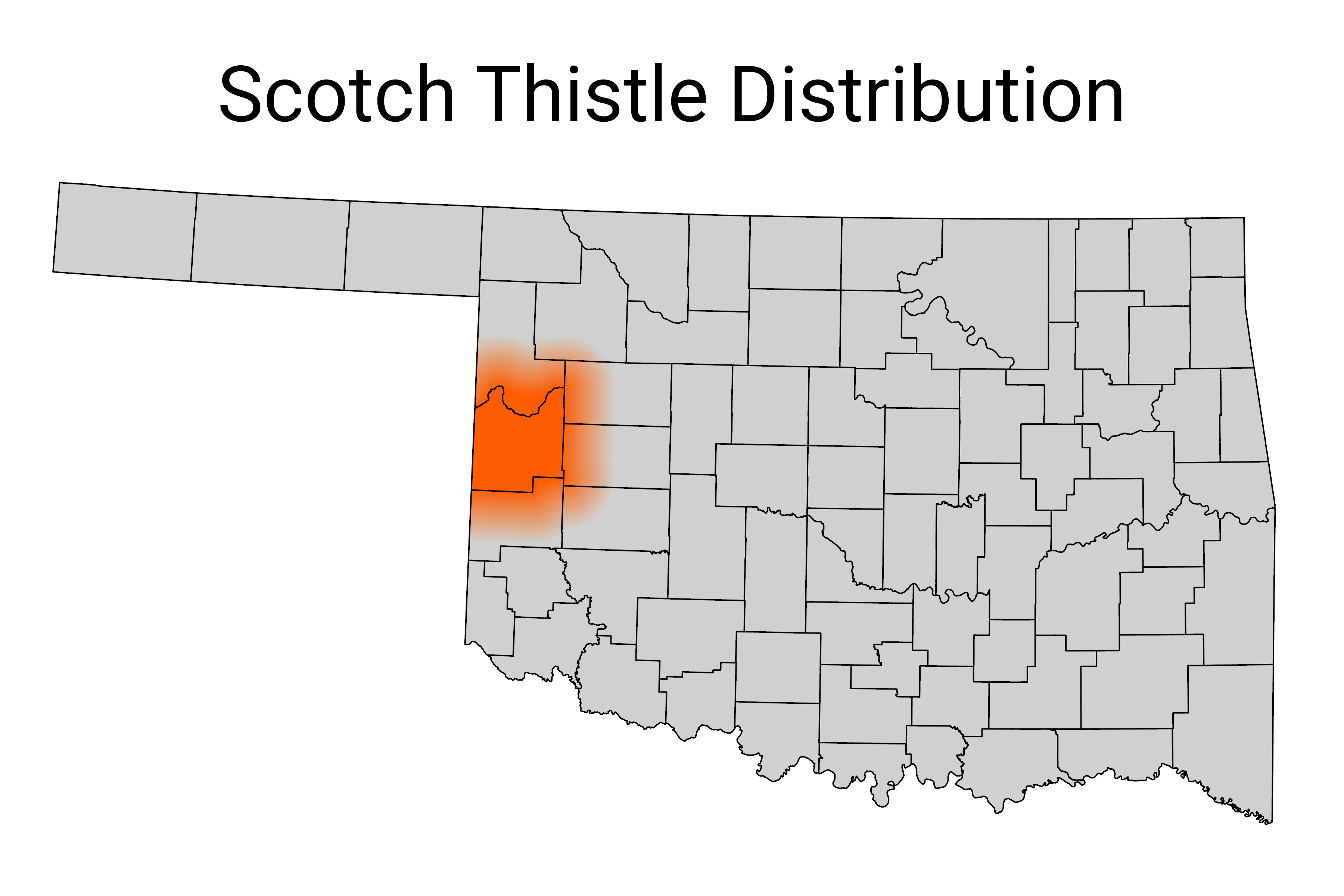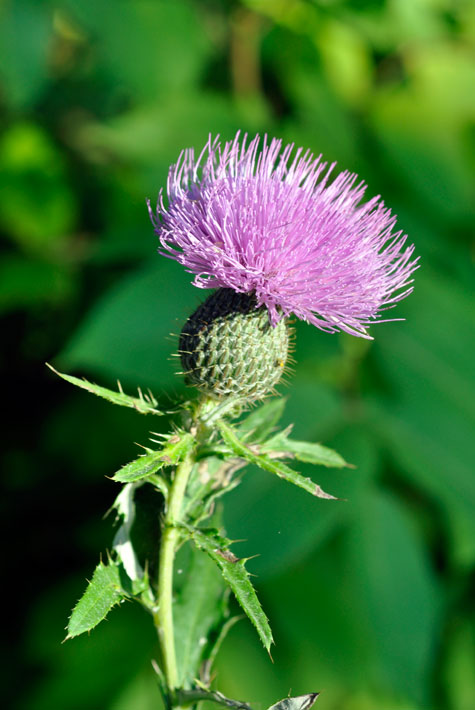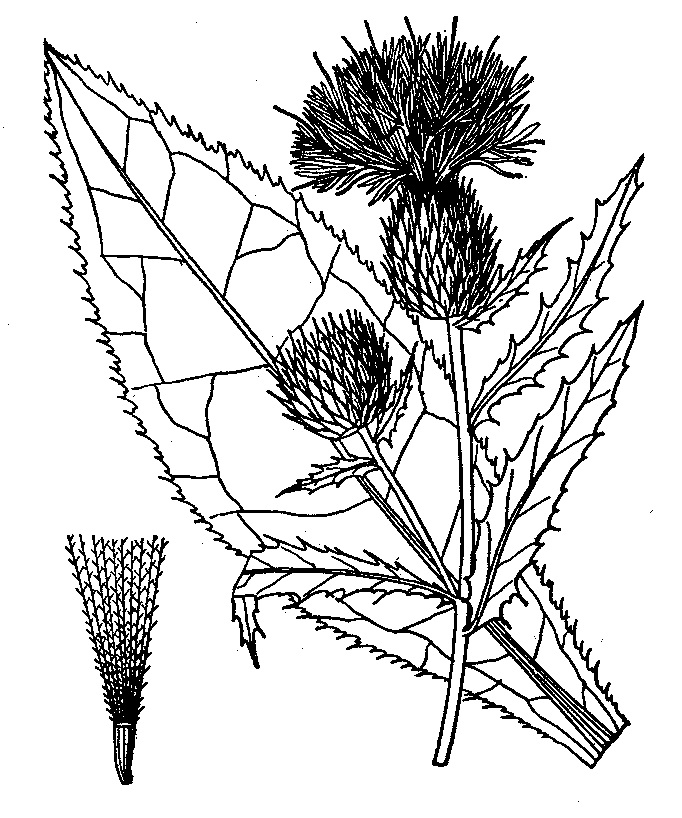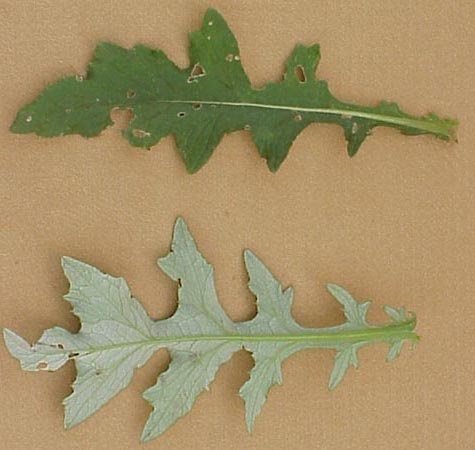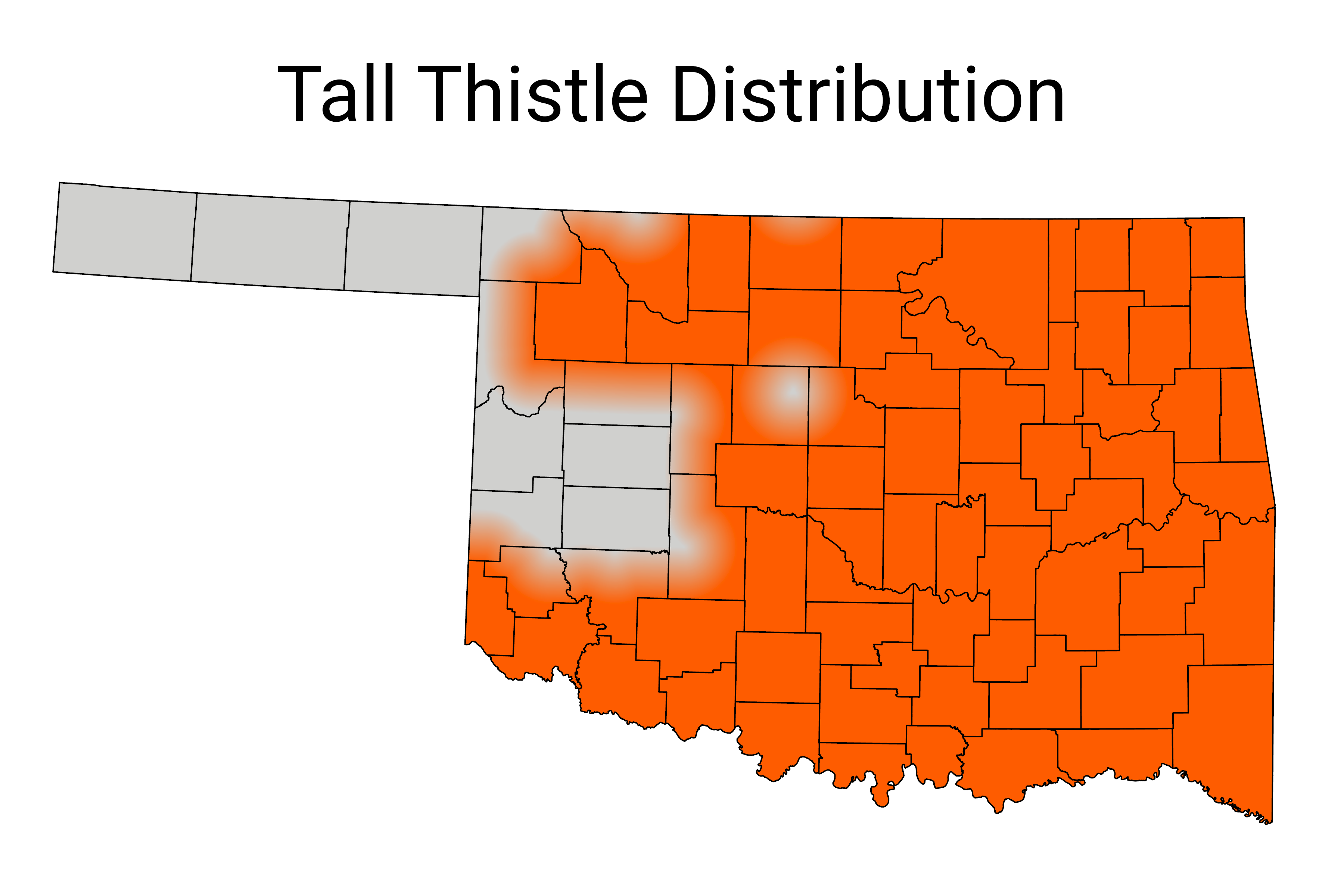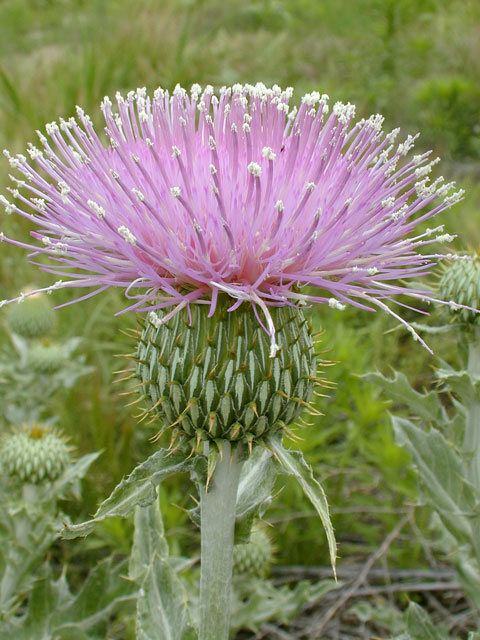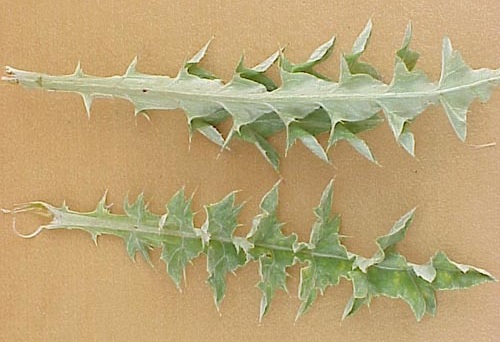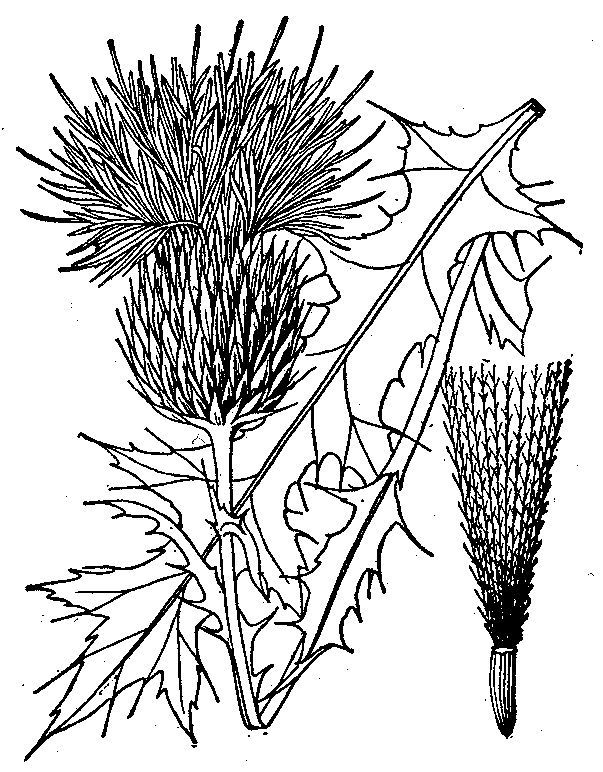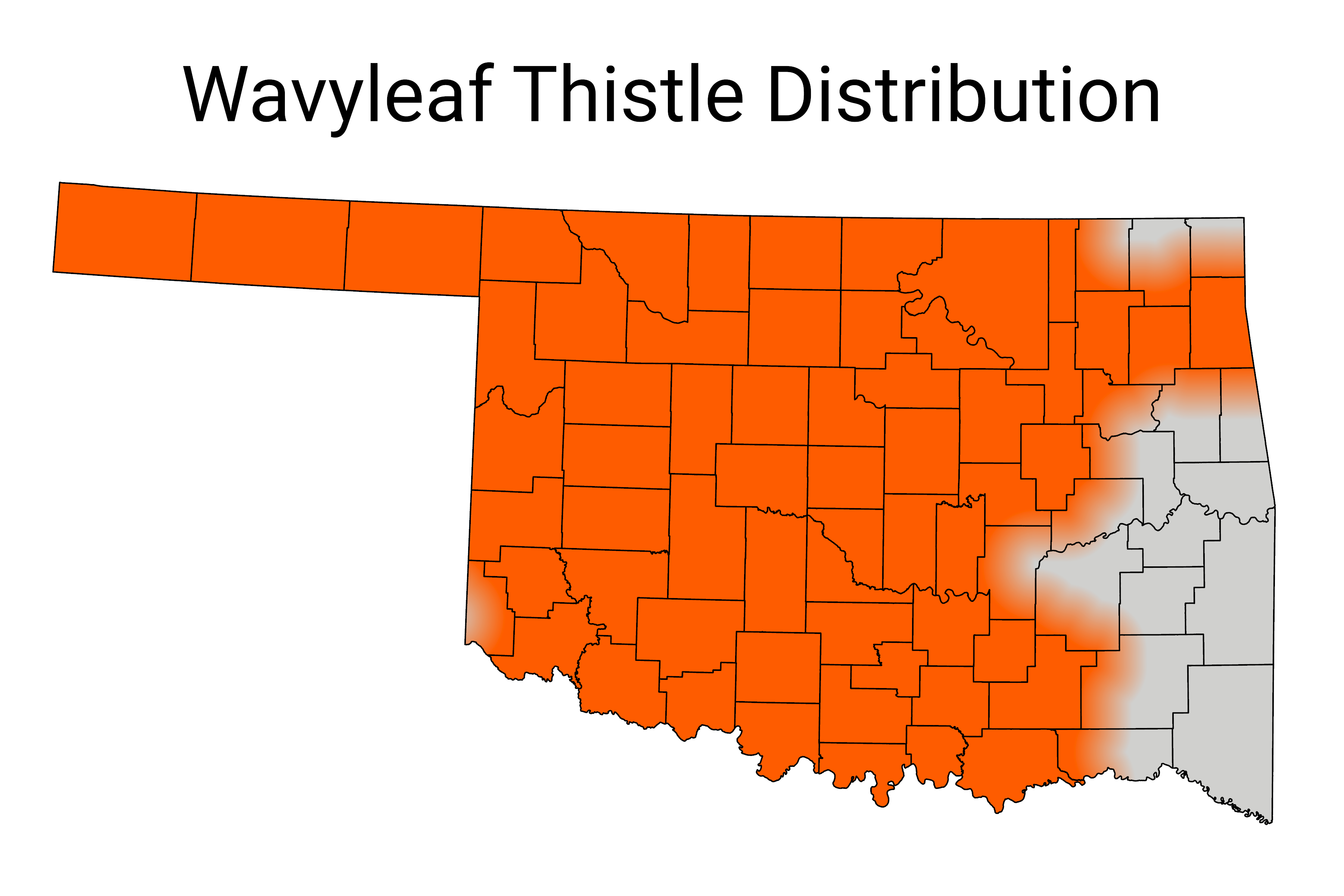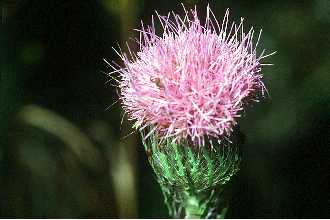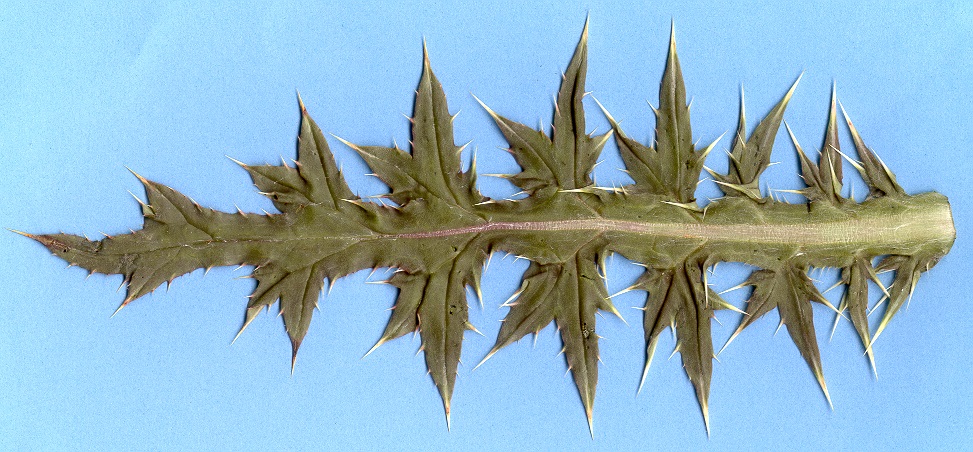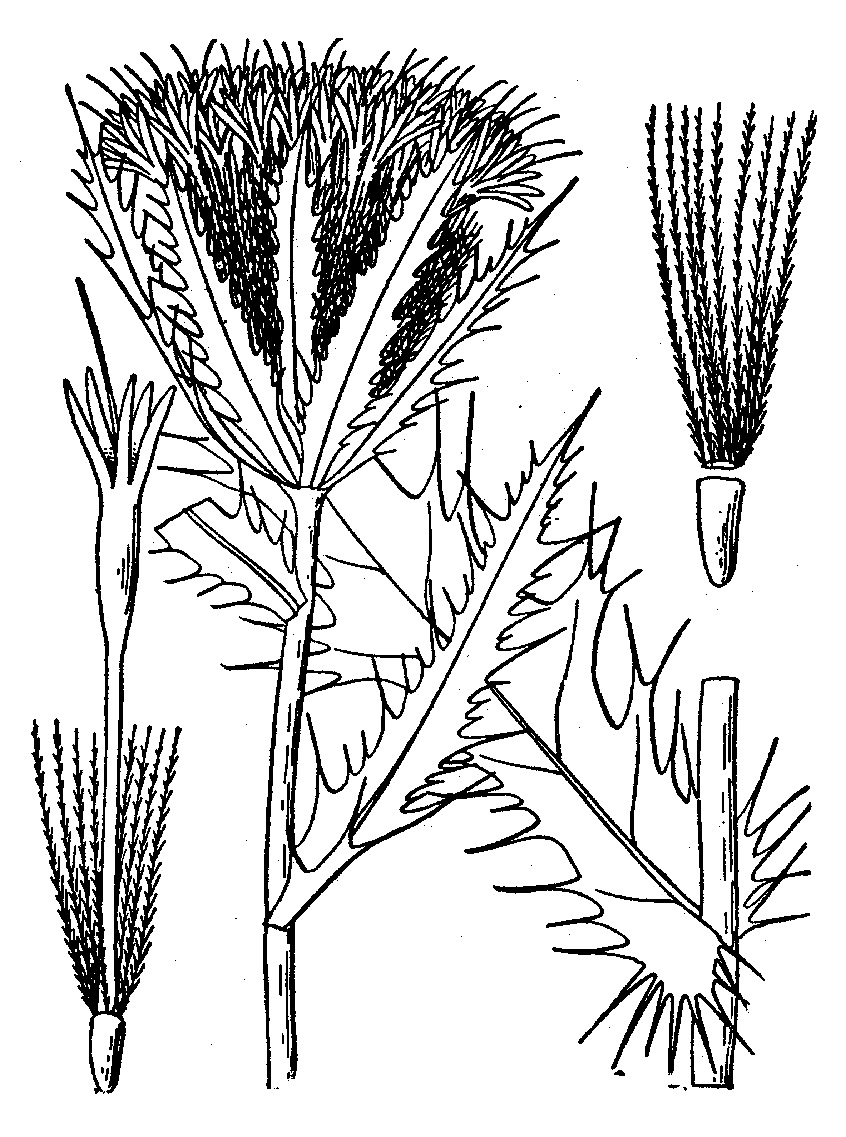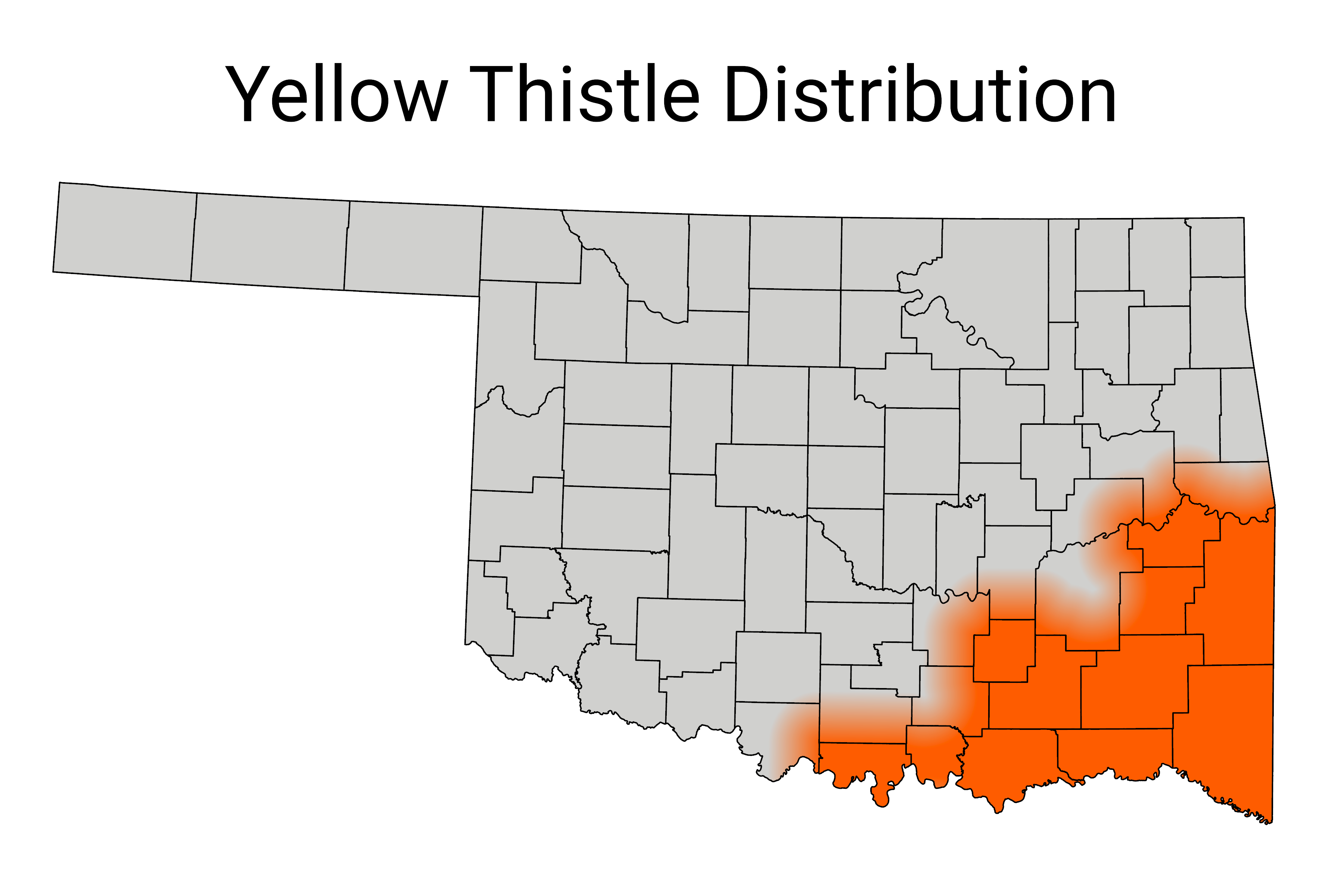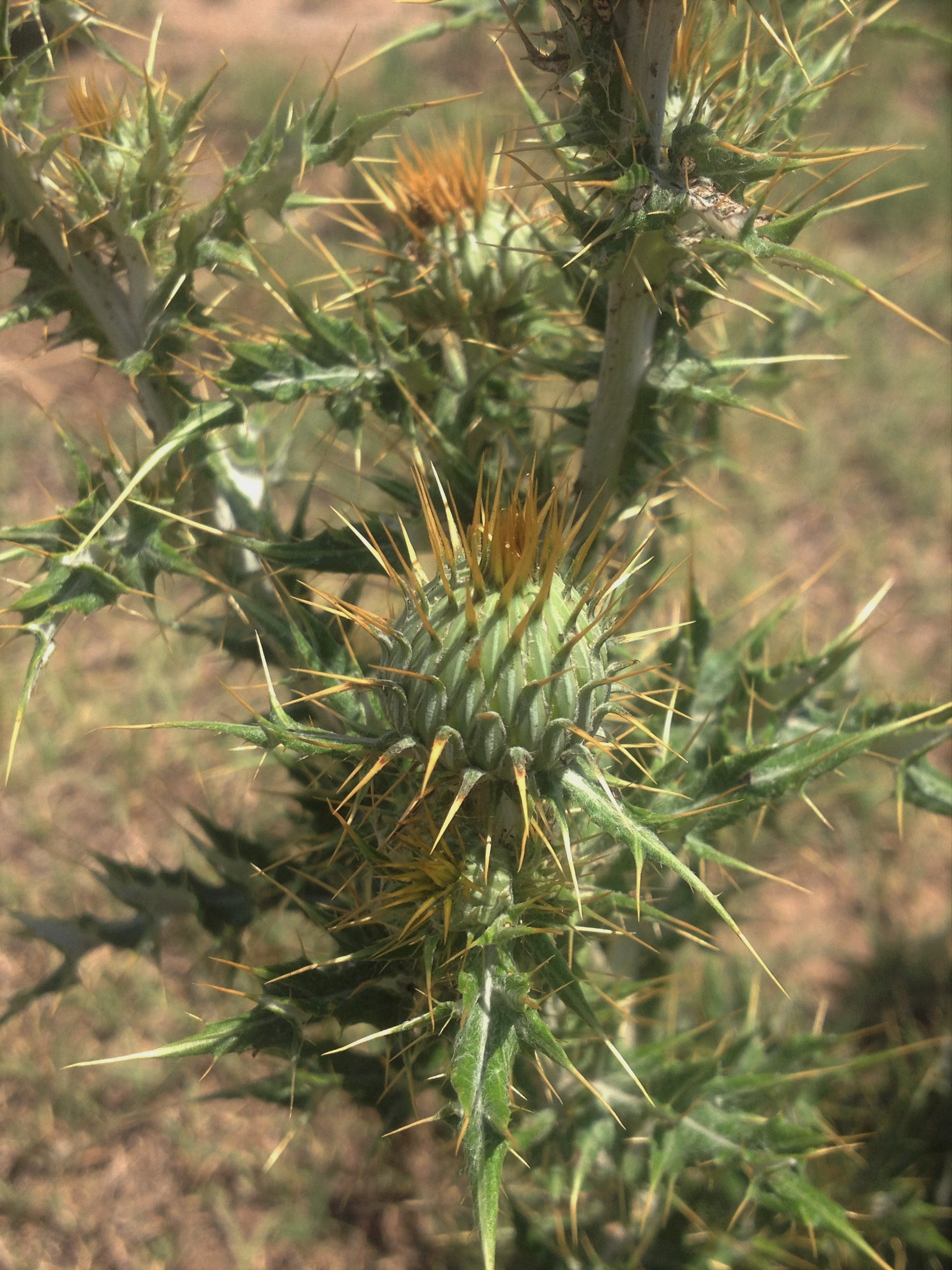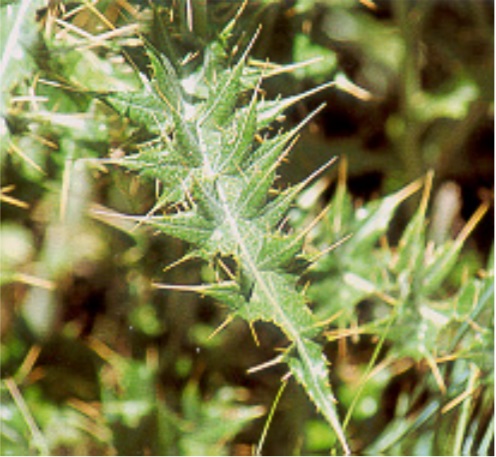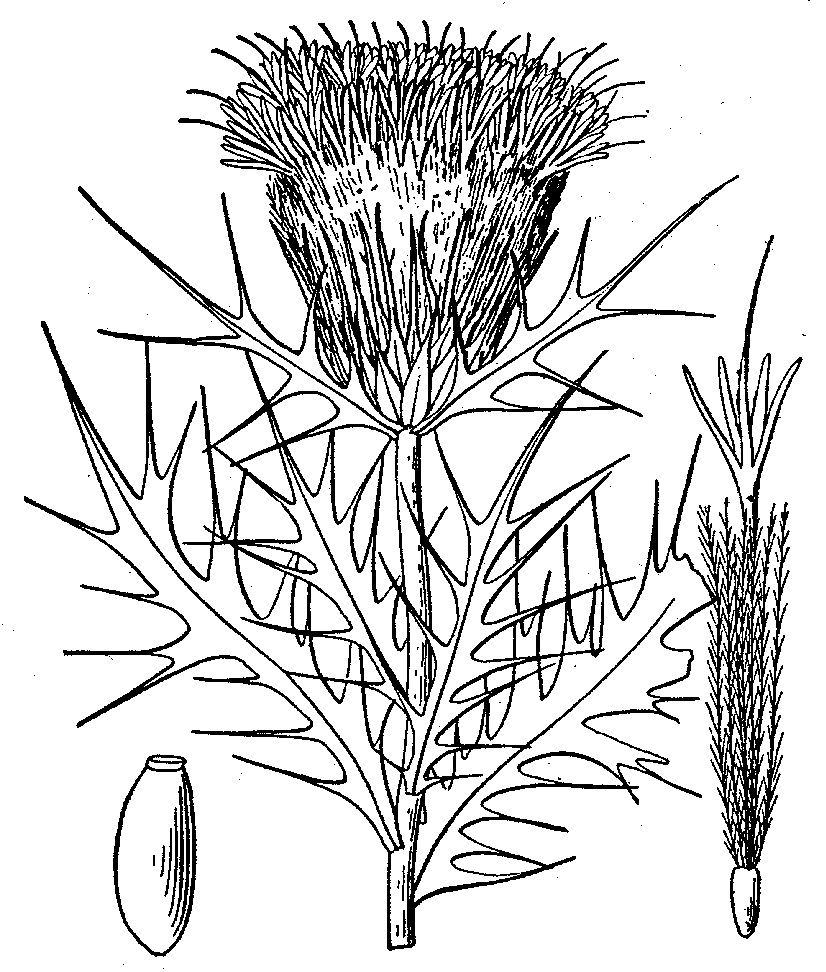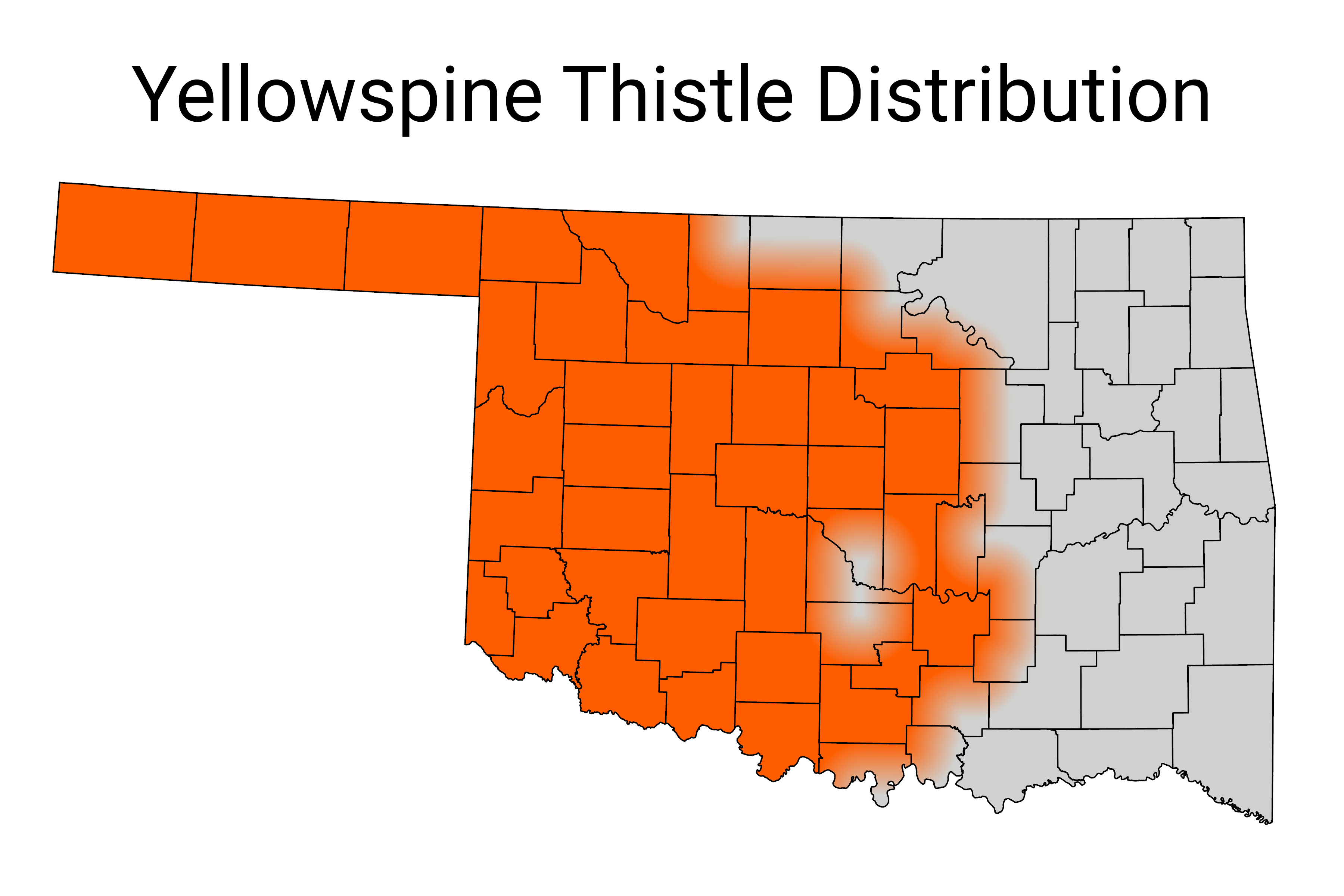Thistle Identification
Oklahoma’s Noxious Weed Law, first enacted in 1994 in four counties in northeastern Oklahoma (Code 35:30-36-13) was amended in 1995, 1998 and 1999. The current law declares musk, scotch and Canada thistles to be noxious weeds and public nuisances in all counties of the state.
There are about a dozen purple-flowered spiny thistle species that occur in Oklahoma. Oklahoma’s Noxious Weed Law can raise concern among landowners if they do not know which thistles on their land they are required to control. The purpose of this publication is to describe the introduced thistles, selected common native thistles and provide information about them. There are other plants that are referred to as thistles, such as the Russian thistle (Salsola tragus), bull thistle or bullnettle (Cnidoscolus texanus) and spiny sowthistle (Sonchus asper), which are not included in this identification guide.
Native Thistles
Native thistles seldom form troublesome populations to rangeland and cultivated crops because insects and diseases keep them in check. They also play an important role as a nectar source for hummingbirds, butterflies and other native pollinators as well as providing seeds for birds. Commonly encountered native species include wavyleaf (Cirsium undulatum), distributed statewide; yellowspine (Cirsium ochrocentrum), in western Oklahoma; tall thistle (Cirsium altissimum), in central and eastern Oklahoma; and yellow thistle (Cirsium horridulum), in southeastern Oklahoma. Four other native Cirsium species occur in Oklahoma, but are rarely encountered. Two other native plants commonly mistaken for thistles because of their purple flowers are Leavenworth’s eryngo (Eryngium leavenworthii) and American basketflower (Centaurea americana) although they are not closely related to thistles.
Introduced “Invasive” Thistles
The five invasive thistles that occur in Oklahoma are native to Europe and Asia and represent four genera. Diseases and insects that normally hold them in check in their home range are not present in the state, thus heavy infestations can often develop. The current Thistle Law includes three of the five species. However, all introduced thistles should be considered invasive.
Thistles Listed in the Noxious Weed Law
Canada thistle (Cirsium arvense) is an introduced perennial thistle widely distributed in Nebraska and other northern states. At present, it does not appear to be a major threat in Oklahoma. Several plants were collected in the panhandle counties in the 1950s and several more in Bryan County in the 1970s, but currently, no infestations are known to exist in the state. In a 1998 survey of noxious weeds in Meade County Kansas, north of Beaver County, Oklahoma, reported a small infestation of Canada thistle. Each plant typically has numerous small flowers clustered at the top with spineless bracts beneath the petals and no spiny wings along the stems.
Musk thistle (Carduus nutans) invaded Oklahoma around 1960. Populations are fairly common in northeastern and central counties with some isolated problems statewide. It has large (2 inches to 3 inches), single, nodding flowers at the end of each branch with long triangular bracts beneath the petals. The stem has spiny wings. In 1991, several Extension educators began collecting and releasing two thistle-feeding weevils collected from established populations in Missouri. These weevils were originally introduced into the U.S. as biological control agents for musk thistle in the 1970’s. The musk thistle flower weevil (Rhinocyllus conicus) and the musk thistle rosette weevil (Trichosirocalus horridus) successfully decreased the severity of infestations in the northeastern Oklahoma counties. These two weevils have since been collected and released in other Oklahoma counties. Since their introduction, OSU Extension educators have redistributed more than 900,000 weevils throughout Oklahoma.
Scotch thistle (Onopordum acanthium) invaded Oklahoma from the west. Infestations have occurred primarily in Roger Mills and Custer counties since the early 1990s; but in 1999-2000, new infestations were recorded in Love, Texas, Harper and Woodward counties. Scotch thistle has large broad leaves. It has 1- to 2-inch upright flowers with narrow spiny bracts beneath the petals. It’s spiny, winged stems and both sides of its leaves are covered in thick cotton-like hairs that give it a grayish-green appearance. It is larger and more difficult to control than musk thistle. Herbicides are not as effective and there are no weevils or other insects available for biological control.
Invasive Thistles not Covered by/in the Noxious Weed Law
Bull thistle (Cirsium vulgare) is a robust and spiny plant that has been in Oklahoma since the 1960s. Isolated infestations occasionally occur, but severe infestations larger than one acre are rare. Plant-feeding insects are commonly found on bull thistle, so it is likely that insects that feed on native Cirsium species may be keeping its populations in check. Bull thistle is distributed statewide, but it is not listed in the Oklahoma Noxious Weed Law. Bull thistle has large, upright flowers with spine-tipped bracts below the petals. It has spiny-winged stems and wrinkled, leathery leaves.
Distaff thistle (Carthamus lanatus) was found in McClain County in the mid-1970s and later in Grady County. Infestations were identified early and were eradicated. Distaff thistle is a spiny annual growing to 3 1/2 feet tall. It produces yellow flowers with red veins borne in spiny heads. This species is a serious threat to range and pastures, due to its invasive nature. Distaff thistle has solitary, yellow flowers at the top of each stem with very large spiny bracts below the petals. It has wooly hair on the stems and leaves and no wings or spines along the stem.
Control of Invasive Thistles
Preventing the spread and eradicating established populations of invasive thistles requires the full cooperation of all landowners. Proper identification of thistles coupled with timely decisions about their control is essential. Invasive thistles can become established in uninfested fields by introducing feed and hay from infested areas, thus hay movement from infested fields should be avoided. When thistles do appear, they should immediately be destroyed by chopping them off below ground or spraying them with a herbicide before they are 6 inches tall. January and February are typically good months to apply herbicides. Be sure to include a nonionic surfactant. If an infestation is present, an integrated control program should be initiated. For details, see Fact Sheet PSS-7318, “Integrated Management of Invasive Thistles in Oklahoma,” available at all OSU Extension county offices.
American basketflower (Centaurea americana) and its distribution.
American basketflower (Centaurea americana) and its distribution.
Vegetative Key to the Most Commonly Encountered Purple-Flowered Thistles in Oklahoma
These thistles produce conspicuous rosettes of leaves as seedlings. Leaves of rosette and upper blades are ovate or lanceolate to oblanceolate; the margins are generally lobed and tipped with spines. Flowers are usually purple. Leaves illustrated in this key are upper surfaces of young leaves. Leaf lobes usually become deeper-cut, and spines become more numerous on older leaves.
Bull thistle (Cirsium vulgare) and its distribution.
Canada thistle (Cirsium arvense) and its distribution.
Distaff thistle (Carthamus lanatus) and its distribution.
Leavenworth’s eryngo (Eryngium leavenworthii) and its distribution.
Musk thistle (Carduus nutans) and its distribution.
Scotch thistle (Onopordum acanthium) and its distribution.
Tall thistle (Cirsium altissimum) and its distribution.
Wavyleaf (Cirsium undulatum) and its distribution.
Yellow thistle (Cirsium horridulum) and its distribution.
Laura Goodman
Extension Rangeland Ecology Specialist
Tom Royer
Extension Entomologist
Alex Rocateli
Forage Systems Extension Specialist

